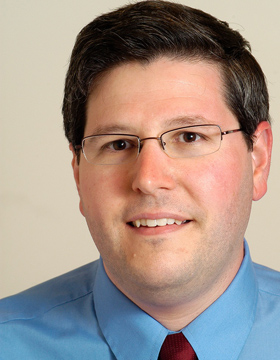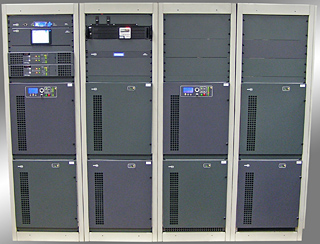Transmitter Efficiency: A Q&A With Rich Redmond

Rich Redmond
ALEXANDRIA, VA.—I remember writing a few years about the efficiency advantages of multi-stage depressed-collector IOT tubes used in digital transmitters. At the time, they were state of the art for both power and efficiency, despite their complexity.
Then at NAB Show 2015, it was clear all the transmitter action was in solid-state products, even for high-power UHF applications. Tubes are increasingly hard to find, even for maintenance of older transmitters. This brings up the very real possibility that replacement IOTs may be scarce commodities in five to 10 years.
With the first wave of DTV transmitters reaching the point of increasing maintenance, coupled with possible channel reassignments due to the spectrum re-pack, we wanted to take a harder look at the topic of transmitter efficiency. To learn more, Broadcast Engineering Extra spoke to Rich Redmond.
Redmond serves as chief product officer for GatesAir, responsible for the marketing, product line management and R&D of the company’s transmission products. He is based at the company’s headquarters in Mason, Ohio, outside of Cincinnati.
BE Extra: Solid-state UHF transmitters are now close or equal to the efficiency of IOT transmitters at similar power levels. Is this trend going to continue? Or is there more efficiency to be wrung from MSDC IOTs or some other tube design?
Redmond: As the industry looks for RF systems that are lower maintenance and simpler to operate, the advancements we have seen in high-efficiency, solid-state TV transmitters exemplify that requirement. We believe that is certainly where GatesAir and most transmitter manufacturers are spending research and development efforts, and where supporting manufacturers in power supplies and other RF parts are all investing.
Get the TV Tech Newsletter
The professional video industry's #1 source for news, trends and product and tech information. Sign up below.
We believe that commercial advancements in MSDC IOT transmitters are unlikely for the foreseeable future. It’s a fairly complex product in a marketplace where the role of the broadcast engineer is evolving, requiring a balance of outstanding IT skills with RF transmission skills. They have as much demand on their ability to have outstanding IT skills balanced with RF wireless TX skills.
BE Extra: What are the key reasons behind the recent improvement in the efficiency of solid-state transmitters? Higher-voltage LDMOS transistors? Better combiners on the amplifiers’ outputs? Something else?
Redmond: Recent developments in high-efficiency solid-state transmitters represent a culmination of many factors. For example, the IT and telco industries really helped to drive advancements in high-efficiency 50-Volt power supplies, reaching an AC-to-DC efficiency of 97 percent. In addition, the wireless base station business has pushed the development of RF device manufacturing to produce higher power and higher efficiency RF devices.
These remarkable efficiency improvements have now been introduced into the DTV world. You take those supporting technologies and combine that with continued innovation on the part of transmitter manufacturers, and the outcome is a high-efficiency transmitter platform like the GatesAir PowerSmart 3D transmitter architecture. In addition, advancements in liquid-cooled transmitter platforms that, in solid-state design, can now evacuate heat from transmitter buildings far more cost-efficiently than in past years, eliminates the need for constant, expensive air conditioning.
BE Extra: If a broadcaster can nurse an existing transmitter along for a couple years, is it likely that efficiency improvement will continue? When does the cost of maintenance exceed the savings (in maintenance and operation) that comes with a new more-efficient transmitter?
Redmond: We’re seeing a lot of broadcasters today who believe the reduced maintenance of solid-state is as important as the power efficiency. The RF engineering base is aging, and few stations want to replace older tube rigs before they understand what ATSC 3.0 and the spectrum repack will bring. But every day you run an older transmitter at lower efficiency, the money spent is not recoverable. The cost of tubes and tube maintenance, the ongoing viability and reliability of tube suppliers, and parts availability compared to 10 years ago make it a risky, and potentially very costly, proposition. Furthermore, switching to a more efficient solid-state transmitter often qualifies for a rebate, so there is potentially an added bonus to the return on investment upon inquiring with your utility company.
BE Extra: Are there any efficiency gains from newer designs for passive RF items, such as mask filters, switches and transmission line? Can tweaking the passive RF components get an extra couple dB at the antenna?

GatesAir 80 kW Maxiva ULXT liquid-cooled, solid-state UHF transmitter
Redmond: There are also some remarkable efficiency gains compared to older power components. We have seen a radical reduction in the footprint of RF output filters, which can now often be hung from the ceiling. For broadcasters who lease space by the square foot in an RF plant, a previously-sized 8-foot wide, 30-foot long RF system that now fits in a 4 x 6-foot space, makes quite a difference in monthly rental costs.
BE Extra: A broadcaster needs a new 35 kW UHF transmitter. What do you recommend: Either solid-state or IOT? Why?
Redmond: We absolutely suggest solid-state over IOT. Solid-state transmitters are significantly simpler to operate, and offer a substantially higher amount of redundancy. In a 35 kW GatesAir Maxiva transmitter, amplification is spread across roughly 40 power amp modules instead of two tubes in an IOT design. Additionally, life expectancy of the solid-state transmitter is easily 15 years at the absolute minimum. If you think about the technical capabilities of your staff 15 years ago versus those of your staff today and project that forward 15 years, the likelihood is that there will be fewer engineers per station comfortable operating liquid-cooled tube transmitters.
Stations and engineers will migrate more to modular components and hot-swappable power supplies that can be easily diagnosed using web browsers and SNMP interfaces. Furthermore, the markedly more compact footprint lowers installation costs, and eliminates beam supplies and building space needs. If I can have a smaller space for my transmitter at my RF site, I am reducing monthly expenditures—especially if I am leasing that space.
BE Extra: There was a recent article that said switching from a UHF channel to a low-band VHF channel would mean the difference between a 25 kW transmitter and a 500 W transmitter to reach the same coverage area. Obviously, there are dramatic propagation differences between the two bands, but the operational savings are significant. Is this something that broadcasters should consider?
Redmond: I would say that the transition from UHF to low-band VHF is something that stations must look at very carefully. There are dramatic propagation differences. You could indeed reduce operating costs quite significantly; however, you must look at the entire delivery chain.
In a low-band VHF operation, the size of the receive antenna on the consumer end needs to be very large to be efficient. Over time, fewer consumers are putting aerials on the roof, and are instead using rabbit ears or integrated antennas inside devices. That consumer behavior makes it more challenging to operate on low-band VHF, in addition to how an increasing amount of man-made noise is rendering VHF frequencies poor for digital TV. That model also makes it more challenging to reach consumers on mobile devices given the needed antenna size. It’s worth noting that there are no DTV deployments globally that use a significant amount of low-band VHF. These deployments are mainly UHF, with some high-band VHF mixed in.
Bob Kovacs is the former Technology Editor for TV Tech and editor of Government Video. He is a long-time video engineer and writer, who now works as a video producer for a government agency. In 2020, Kovacs won several awards as the editor and co-producer of the short film "Rendezvous."

